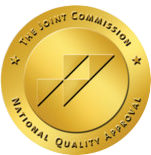By Mauricio Sirvent
When the pandemic spread wildly in March of last year, hospitals around the world were suddenly stretched thin.
In an ideal world, the pandemic would have been the perfect opportunity to deploy an acute care telemedicine solution; to meet the overwhelming demand for emergency care with better incoming patient assessments, access to remote specialists in essential fields like stroke care and pulmonology, and the ongoing support of inpatient rounds through remote hospitalists.
But in practice, acute care telemedicine did not deploy as widely as it could have during the pandemic—at least not on the front lines—and the reasons why are varied.
Telemedicine Licensing & Credentialing Red Tape
The federal guidelines outlining when and how doctors can practice across state lines were loosened during the crisis, making it easier in theory for telemedicine doctors to work in hospitals outside their home state. Yet licensing remained a bottleneck due to the patchwork of state laws and varying responses to the crisis by state.
The states that got it right—like California and New York—entirely waived licensing requirements. However, in less proactive states, the process of credentialing out-of-state telemedicine doctors remained woefully ridden with red tape throughout the pandemic.
In Ohio, for example, the state licensing board was required to verify credentials at every other hospital the doctor had served in the 10 years prior. For a telemedicine doctor, that could be as many as 100 hospitals. Thus, it made more sense for Ohio hospitals to prioritize credentialing in-person doctors quickly rather than spend time navigating licensure laws, no matter how experienced the telemedicine doctor may be.
Infrastructure Limitations Slow Telemedicine Adoption
Beyond navigating red tape in licensing, hospitals weren’t prepared to take on new technology initiatives during the pandemic. The most hard-hit hospitals worked around the clock to meet insurmountable caseloads, spilling COVID-19 cases out of emergency rooms into makeshift ICUs elsewhere in the hospital or even in global conference halls.
While the leading acute care telemedicine providers offer emergency programs to stand up telemedicine solutions in as little as 72 hours in the wake of a pandemic, hurricane, severe weather, or the unforeseen, hospitals must have the staff to intake the solution and bring technology online.
Acute telemedicine connects onsite hospital staff with on-demand virtual care specialists to determine a patient’s best course of action. This is an interaction that requires a network of doctors, broadband connection, telemedicine carts and contractual relationships between hospitals and telemedicine providers.
Hospitals that never engaged with a telemedicine partner before were suddenly thrust into the need for more doctors fast. And they were not ready to take on the additional load of training staff on the appropriate use of the camera or building new technology into hospital workflows. Imagine taking a point-of-sale ordering system to a restaurant with a line of starving customers stretching out the door.
As such, if a hospital does not have the infrastructure in place at the beginning of an emergency, the time to deploy telemedicine may have already passed. Many hospitals opted to bring live doctors in rather than learn and adopt new systems on the fly.
Telemedicine as a Powerful Asset
If anything, the COVID-19 pandemic showcased an important reality: no matter how much they stand to gain, ICUs are fundamentally hesitant to move away from the bunker model of wired beds monitored by triggered alarms and tended by onsite staff. Hospital leaders know and trust this system, which is reasonable motivation from an organization in crisis to opt for the known, the understood, and the familiar.
Perhaps if the COVID-19 pandemic had been the COVID-25 pandemic, acute care telemedicine as an industry would already have the acceptance and industry traction to successfully deploy emergency modules at partner hospitals overrun with patients, to build COVID-19 triage support tools and ICU monitoring solutions, stroke care and pulmonology support, to become a powerful asset to the front lines.
When the dust settles on this unprecedented situation, we should note what worked in the fight against COVID-19 and what did not. We should permanently make it easier for our doctors to gain licenses and work in telemedicine across state lines. We should invest in broadband infrastructure for every hospital in the country. We should build models of care that account not just for the bunker but also for remote care. We should invest in telemedicine today, in advance of the fight tomorrow.
In short, we should begin our preparations for the next pandemic at once. The reality is grim but unavoidable: COVID-19 will not be our last health emergency. And we may need significantly more effective and flexible emergency preparedness to survive the next one.
***
Mauricio Sirvent is the Executive Vice President, Care Delivery – Neurology and Psychiatry. Sirvent has over 25 years of expertise leading and advising health care organizations with an emphasis on operational efficiencies. In his current role, he is focused on the strategic growth and alignment of the neurology and psychiatry service lines of Access TeleCare. This involves working with Access TeleCare partner hospitals to improve the quality of care for patients in an effective and streamlined manner while working internally to improve the planning and execution of key care-delivery processes, resource utilization, staff schedules, and quality outcome measurement.
You may also be interested in reading The Myth is Broken: Investing in Our Virtual Healthcare Future, by Dr. Jason Hallock, Chief Medical Officer, Access TeleCare.









